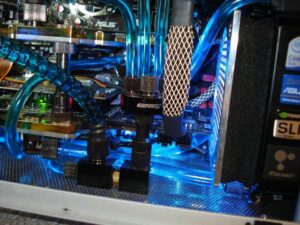
Arbitrary access memory (RAM) is an interior memory that trades information straightforwardly with the CPU, likewise called principle (memory). It tends to be perused and composed whenever and is quick, frequently going about as a brief information stockpiling mechanism for working frameworks or other running projects.
The substance of the capacity unit can be openly taken out or put away depending on the situation, and the entrance speed is free of the area of the capacity unit. Such a memory will lose its put away substance when it is controlled off, so it is principally used to store programs for momentary use. As indicated by the functioning guideline of the capacity unit, the irregular access memory is additionally partitioned into static arbitrary access memory (SRAM) and dynamic arbitrary access memory (DRAM).
Measure presentation
The charge on the entryway capacitance of the MOS semiconductor is utilized to store data. When the power off data will all lose. Since the entryway will release, an invigorate system is expected to recharge the door capacitance at customary spans. It is additionally needed to renew the charge later every readout, which is called dynamic revive. So it is called dynamic irregular access memory.
SRAM presentation
The register is utilized to store data, so whenever power is lost, the information will be totally lost. However long the power is provided, its information will forever exist, and no unique invigorate is required, so it is called static arbitrary access memory.
What is the contrast between a PC’s DRAM and SRAM?
Static stockpiling unit (SRAM)
- Capacity rule: putting away information by trigger
- Unit structure: six-tube NMOS or OS
- Benefits: quick, simple to utilize, no compelling reason to revive, static power utilization is amazingly low; frequently utilized as Cache
- Weaknesses: high part count, low reconciliation, and high working power utilization
- Usually utilized SRAM coordinated chips: 6116 (2K and TImes; 8 pieces), 6264 (8K and TImes; 8 pieces), 62256 (32K and TImes; 8 pieces), 2114 (1K × 4 pieces)
Dynamic memory unit (DRAM)
- Capacity guideline: The standard of putting away charge by utilizing MOS tube entryway capacitance should be invigorated (mid: three-tube fundamental unit; presently: single-tube essential unit)
- Revive (recovery): In request to renew the missing charge on schedule to keep away from loss of put away data, it is important to intermittently charge the door capacitance.
- Revive time: the ideal opportunity for the invigorate activity to be performed occasionally. This time should be not exactly the time (under 2ms) that the entryway capacitance normally holds the data.







